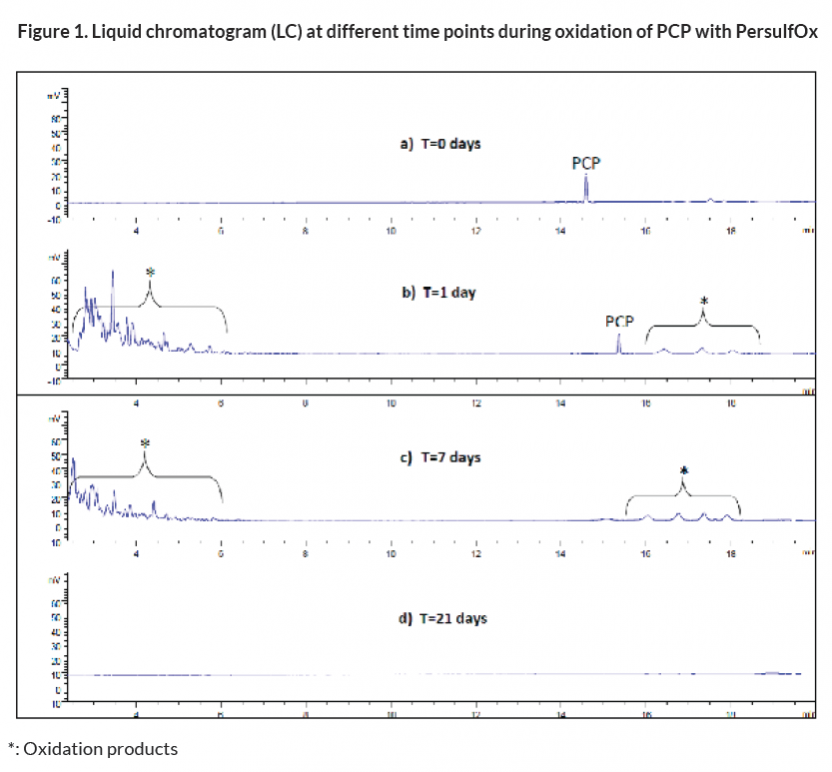Pentachlorophenol (PCP) is a pesticide and disinfectant that is used industrially as a wood preservative.¹ PCP is an environmental and health concern due to its bioaccumulation and potential carcinogenic properties.² It is desirable to treat PCP in soil and groundwater using cost-effective in situ technologies such as bioremediation, oxidation, or reduction. With each of these potential treatment approaches, it is important to validate the efficacy of treatment and to confirm that potentially toxic intermediate degradation products do not persist.
The following study was performed to investigate the ability of the PersulfOx® in situ chemical oxidation (ISCO) agent to treat PCP contamination.
Water samples containing PCP (20 mg/L) were treated with 0.5% w/w PersulfOx for 27 days. The reaction was monitored using LC/ELSDA, LC/MSB, and GC/MSC. Laboratory results indicate that PCP oxidation occurs rapidly when treated with PersulfOx. After one day of treatment, analysis by liquid chromatography (LC) shows a complex mixture of products and a small amount of residual PCP (Figure 1b). After seven days, the PCP peak was no longer present in the LC trace (Figure 1c). After 21 days, the LC peaks had disappeared, suggesting that PCP and the unidentified mixture of products had been destroyed (Figure 1d). The mixture was analyzed again at 27 days by GC/MS and the results show >99.9% oxidation of PCP compared with the control sample.
To tentatively identify the intermediates formed during the reaction, an aliquot of water from the PersulfOx/PCP reaction mixture after 48 hours was evaluated by LC/MS analysis. The identification of intermediate compounds was inconclusive, but the fragmentation patterns suggest that the majority of the products are not chlorinated compounds. Furthermore, the toxic potential intermediates tetrachlorohydroquinone and tetrachloro-1,4-benzoquinone were not detected by LC/MS analysis.
ALiquid Chromatography/Evaporative Light Scattering Detector
BLiquid Chromatography/Mass Spectrometry
CGas Chromatography/Mass Spectrometry

References
1. “Pentachlorophenol and its Uses a Wood Preservative” United States Environmental Protection Agency . 09 May 2012. US EPA. 12 November 2014 <https://www.epa.gov/pesticides/factsheets/chemicals/pentachlorophenol_main.htm>.
2. R.S. Chhabra. “Toxicology and Carcinogenesis Studies of Pentachlorophenol in Rats.” Toxicological Sciences 48 (1998): 14-20. Toxsci.oxfordjournals.org. Web. 12 Nov. 2014. <https://toxsci.oxfordjournals.org/content/48/1/14.full.pdf html>.



